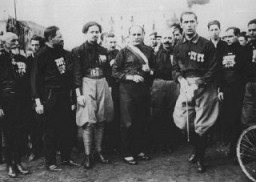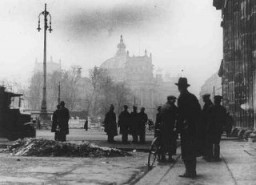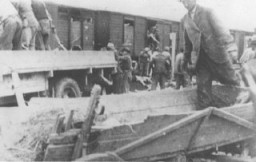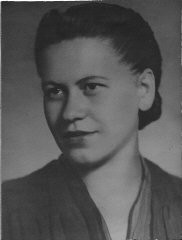You searched for: googleseo霸屏霸屏包上【TG飞机:@bapingseo】谷歌seo指南在哪里【TG电报:@bapingseo】帕勞google廣告合作聯系【Telegram:@bapingseo】138app下载注册送28彩金jbo竞博体育官网?202207075rUBUV.html
<< Previous | Displaying results 41-50 of 212 for "googleseo霸屏霸屏包上【TG飞机:@bapingseo】谷歌seo指南在哪里【TG电报:@bapingseo】帕勞google廣告合作聯系【Telegram:@bapingseo】138app下载注册送28彩金jbo竞博体育官网?202207075rUBUV.html" | Next >>
-
Benito Mussolini
ArticleBenito Mussolini’s Fascist takeover of Italy was an inspiration and example for Adolf Hitler and the Nazi Party in Germany. Learn more.

-
Mechelen - Maps
Media EssayIn the summer of 1942, the Germans made preparations to deport the Jews of Belgium. They converted military barracks in the city of Mechelen into a transit camp. Between August 4, 1942, and July 31, 1944, a total of 28 trains carrying 25,257 Jews left Mechelen for German-occupied Poland; most of them went to Auschwitz-Birkenau. This figure represented more than half of the Belgian Jews murdered during the Holocaust.
-
German forces enter Warsaw
FilmGermany invaded Poland on September 1, 1939, beginning World War II. German forces swiftly overran Polish border defenses and approached Warsaw, Poland's capital city. Warsaw suffered heavy air attacks and artillery bombardments during the campaign. The city surrendered on September 28. This footage shows German forces entering Warsaw amidst the destruction caused by their bombardment of the city.

-
Onlookers view the damaged Reichstag
PhotoOnlookers in front of the Reichstag (German parliament) building the day after it was damaged by fire. On this same day, the Nazis implemented the Decree of the Reich President for the Protection of the People and the State. It was one of a series of key decrees, legislative acts, and case law in the gradual process by which the Nazi leadership moved Germany from a democracy to a dictatorship. Berlin, Germany, February 28, 1933.

-
Aftermath of pogrom in Iasi
PhotoRoma (Gypsies) remove bodies from the Iasi-Calarasi death train during its stop in Tirgu-Frumos. Two trains left Iasi on June 30, 1941, bearing survivors of the pogrom that took place in Iasi on June 28-29. Hundreds of Jews died on the transports aboard crowded, unventilated freight cars in the heat of summer. Romania, July 1, 1941.

-
1945 portrait of Eta Wrobel
Photo1945 portrait of Eta Wrobel who was born on December 28, 1918, in Lokov, Poland. During the Holocaust, Eta helped organize an exclusively Jewish partisan unit of close to eighty people. She was the only child in her family of ten to survive.

-
Photo taken a few weeks before World War II began
PhotoPhoto taken a few weeks before World War II began. Regina is at the right of the front row. Kunow, Poland, July 28, 1939.

-

-
Mechelen
ArticleThe Mechelen camp, halfway between Antwerp and Brussels, was a transit camp for the deportation of Jews from Belgium during the Holocaust.

-
Kamenets-Podolsk
ArticleIn August 1941, Kamenets-Podolsk became the site of a mass killing of Jews. This was one of the first large-scale mass murders of the Final Solution.

